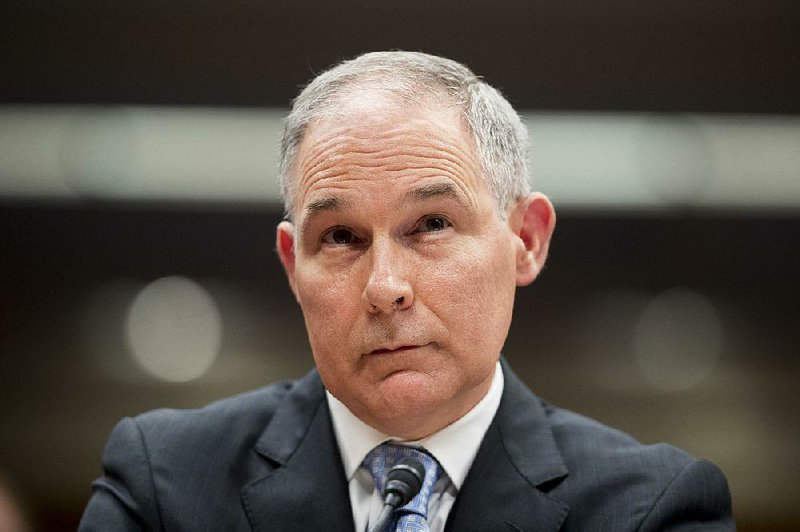WASHINGTON -- The Environmental Protection Agency failed to properly assess security threats facing former administrator Scott Pruitt before spending $3.5 million on a round-the-clock protective detail in his first year, according to an Inspector General's report.
Those costs covered just 11 months from February to December 2017 -- and amount to more than double what was spent during the same period a year earlier.
"The increased costs associated with this undocumented decision represents an inefficient use of agency resources," the report concluded.
Pruitt began receiving 24/7 protection from the moment he took office in February 2017, at the request of a political appointee who said the polarizing former Oklahoma attorney general faced a higher security risk than his predecessors.
Guarding Pruitt soon demanded triple the manpower of previous protective details, requiring EPA special agents to pause criminal investigations and rotate in from around the country.
In its report Tuesday, EPA Inspector General Arthur Elkins said the agency had no formal threat assessment process to determine what was actually warranted. Rather, the agency relied on an August 2017 report that listed threats against Pruitt and his family but "did not assess the potential danger presented by any of these threats."
In a statement Tuesday and in written responses to the inspector general, the EPA disputed the notion that it lacked justification for protecting its controversial administrator.
"Some protectees are at risk simply based on the positions they hold," EPA officials wrote. "We are, unfortunately, living in an era when political discourse is no longer polite and persons feel that political disagreements justify making statements on social media that incite violence."
The EPA also said that a threat assessment alone, while "a useful tool," does not "mean that there is no risk or that protective services are not justified."
The agency added that since "most attacks are not preceded by a threat, physical protection remains a necessity." It cited the 2017 attack at a Republican congressional baseball practice and the 2011 shooting of then-Rep. Gabrielle Giffords, D-Ariz., as examples.
Michael Abboud, an EPA spokesman, said Tuesday that given the generalized threat, "there is no support for the [inspector general's] insinuation that expenditures for protective services carried out before a threat analysis was conducted were not justified."
A portion of the high costs were attributed to Pruitt's first-class travel, which his security chief also argued was necessary because of potential threats. Of agents who accompanied the administrator, at least one typically sat with him in first class.
That cost taxpayers about $740,000 in travel expenses in 2017, a figure more than triple what Pruitt's predecessor spent on travel the previous year.
Pruitt, who resigned in July amid a slew of ethics inquiries, faced repeated questions while in office about the size and expense of his security detail. The report notes the EPA spent more than $2.3 million on agents' salaries.
That far eclipses what taxpayers paid on average to provide security for Pruitt's immediate predecessors, Gina McCarthy and Lisa Jackson. McCarthy and Jackson, each of whom led the EPA under President Barack Obama and were controversial figures in their own right, generally had security teams composed of about a half-dozen agents.
By contrast, Pruitt's security detail swelled to about 19 agents to cover the round-the-clock needs and his near-constant travel schedule, both for work-related trips and for personal visits home to Oklahoma and other places, including California and Kentucky, according to the inspector general.
For months, EPA officials cited the verbal and written threats Pruitt received since joining the administration as justification for his enhanced security. The alleged threats came in the form of social media posts, phone messages and other contacts. A "potentially threatening postcard" arrived from a person who "expressed regret and apologized" when confronted by investigators. Authorities concluded that an angry letter from a prison inmate "did not reveal any overt threatening language."
While the agency's inspector general typically does not discuss the actual number of threats against EPA employees, a deputy inspector general did acknowledge last year that investigators had opened more cases regarding Pruitt than for past administrators.
But how Pruitt used his personal security detail also came under scrutiny after The Washington Post reported earlier this year that he had asked agents guarding him to run errands for him on occasion, including picking up his dry cleaning and taking him in search of a favorite moisturizing lotion.
A Section on 09/05/2018
